November 2, 2017
Foliage and Flower Finery
It’s important to me to grow food for wildlife. Between spurts of successive blooms, I rely quite a bit on foliage. Native velvet-leaf mallow (Allowissadula holosericea) does the drama queen thing in a front bed.
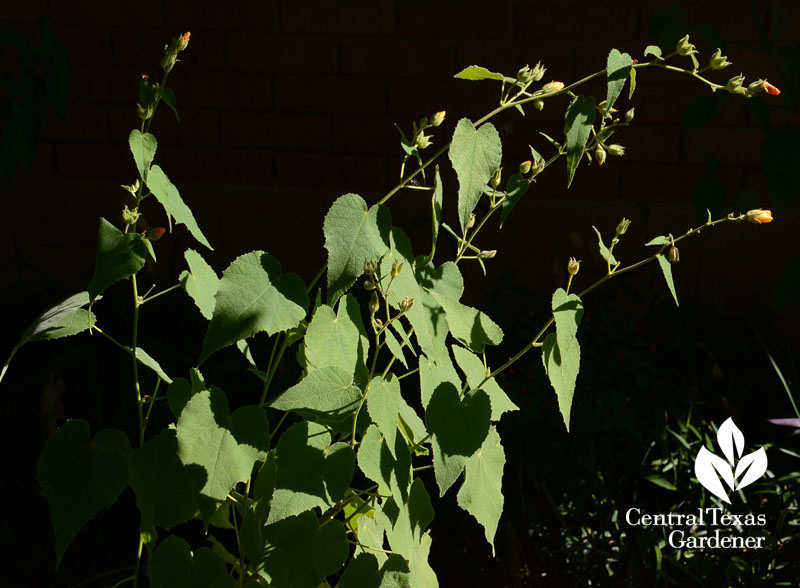
My garden’s well-stocked in sections of high contrast (psycho) light. A wayward bamboo muhly stem hollers for attention in one of them.
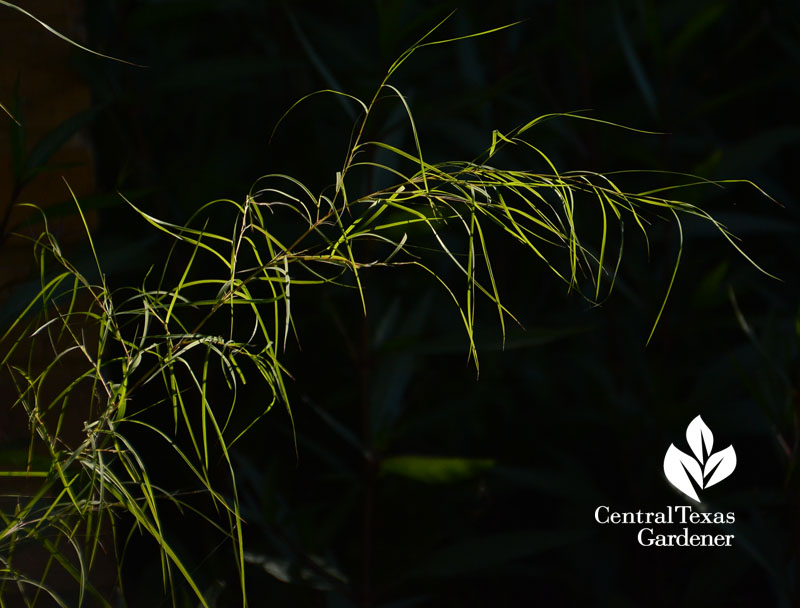
Native Hamelia patens took on its autumn glow after a brief handshake with 39°. This first year plant is finally pushing out a few flowers for any bee coming by.
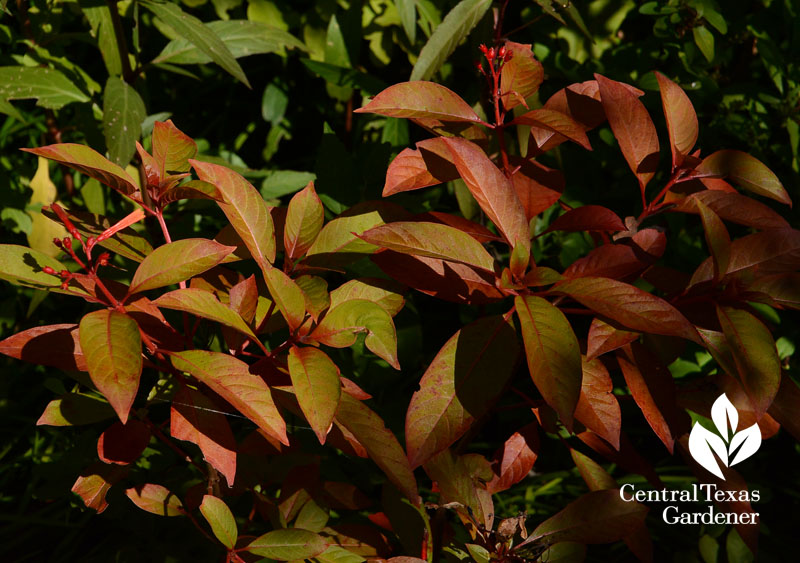
I may be the only person in town who can’t get Pride of Barbados to bloom, but I’ll take the foliage for now.
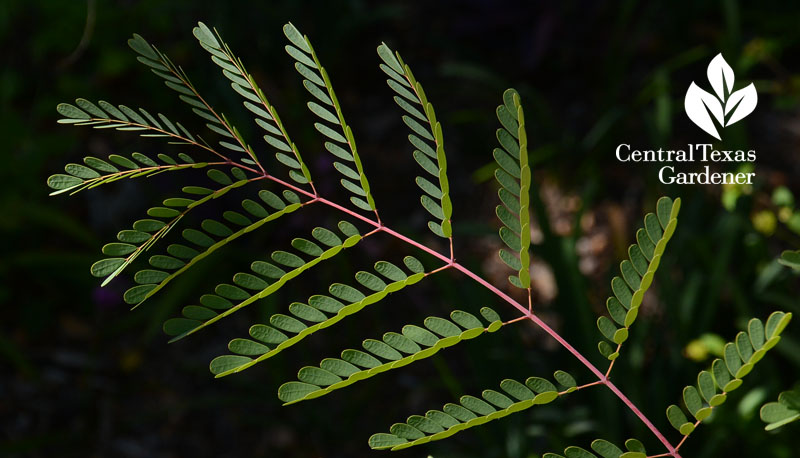
Maybe next year I’ll luck into those bee-loved flowers!

It’s hit and miss with crinums, though this summer, they flowered for weeks. Since then, they’re unchallenged in big floppy leaf status.
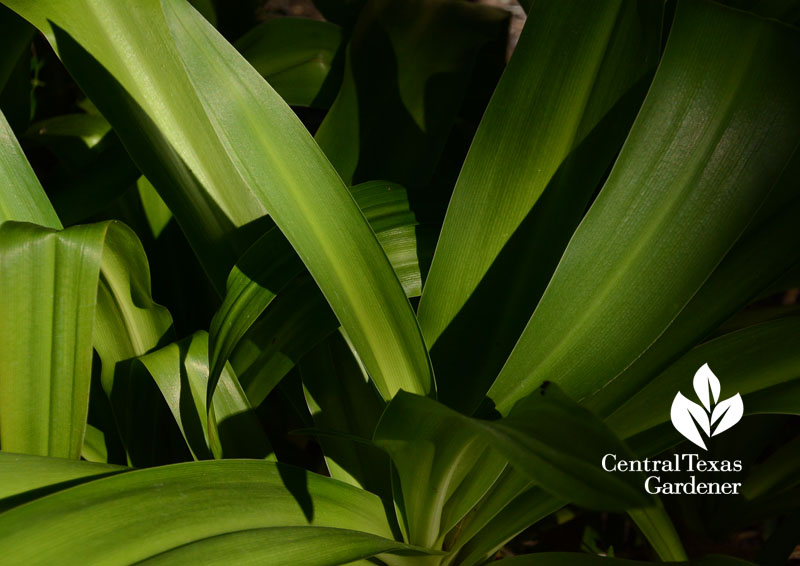
Foliage isn’t just the steady worker in the garden; it also flaunts its glamorous glory. This week, Designer Karen Chapman dazzles our imagination with Fine Foliage designs in containers and landscapes.
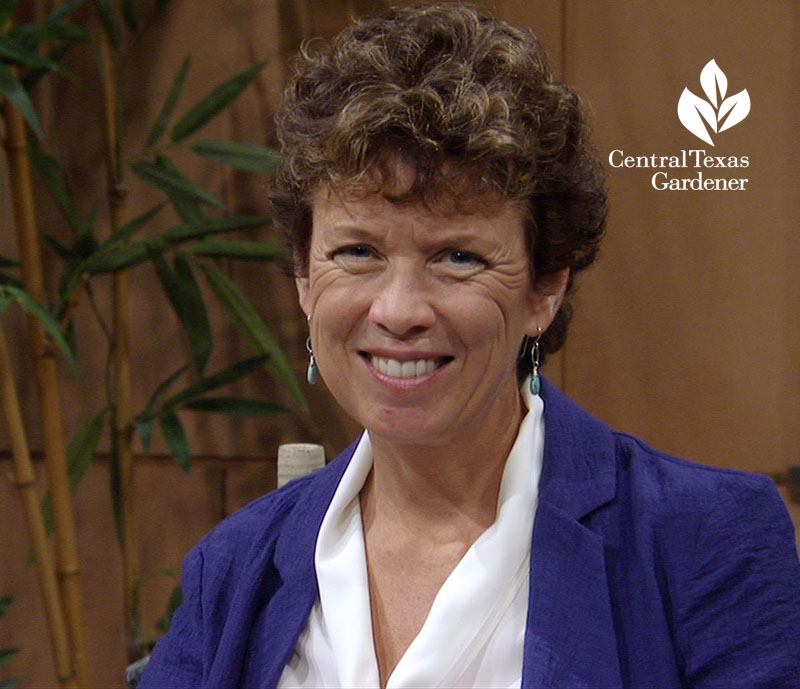
Meet a few eye-popping combinations from the books she co-authored with Christina Salwitz: Fine Foliage and Gardening with Foliage First.
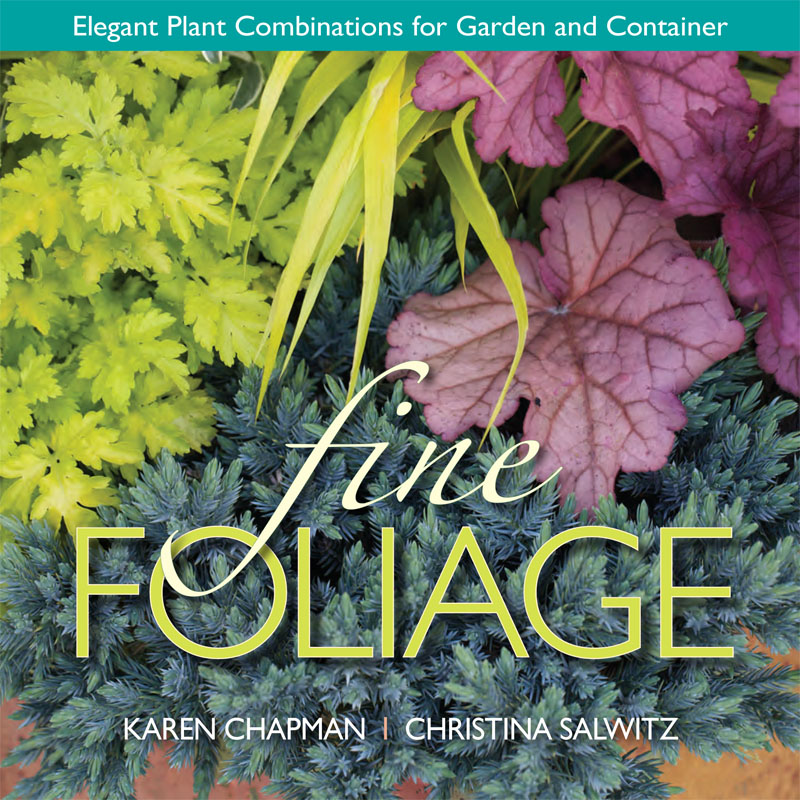
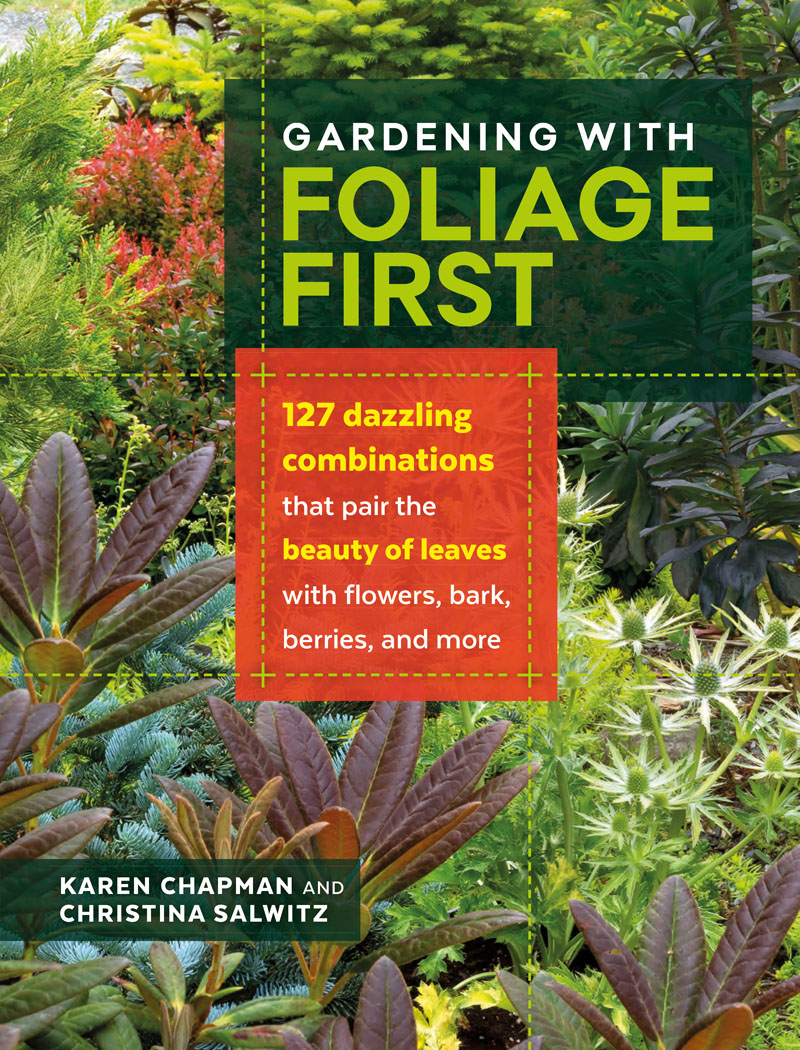
Since the hardest thing for many of us (myself included) is partnering our plants, I love how Karen and Christina show how to layer designs in Gardening with Foliage First with a spotlight, highlight, and limelight.
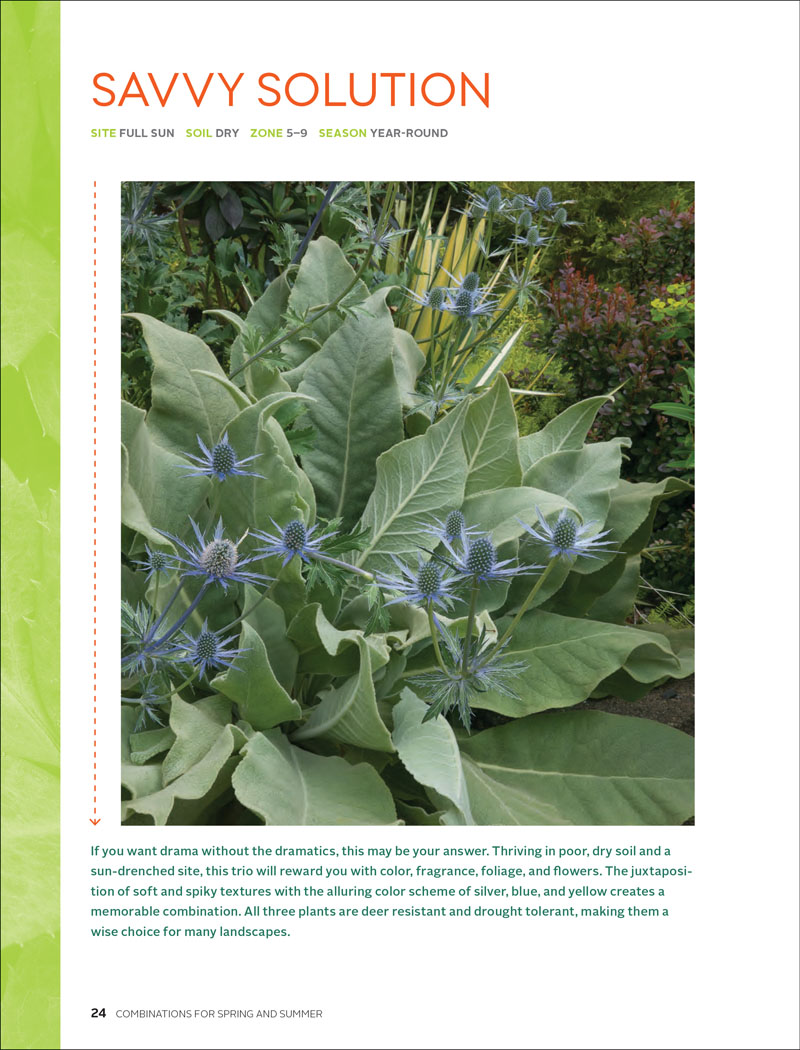
They break down each grouping with plant details, since it’s essential to know if they agree on soil, light, and amount of water.
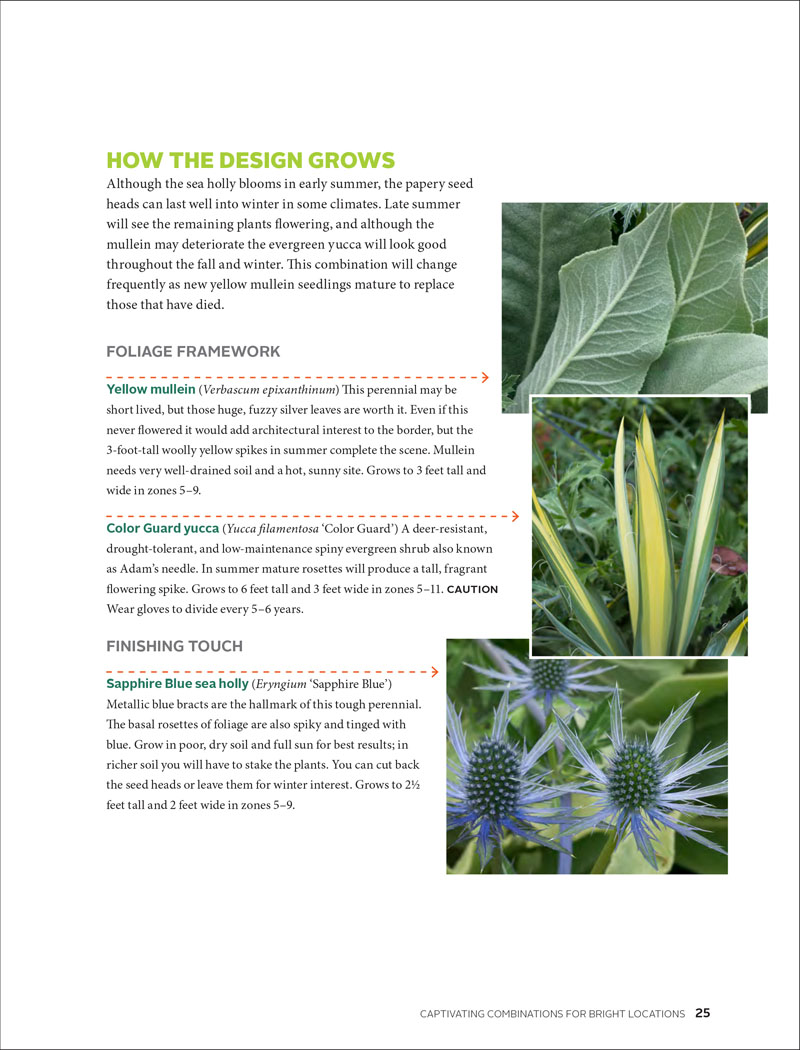
I also like how they section their book by seasons in sun and shade to illustrate the beauty that stretches across the calendar.
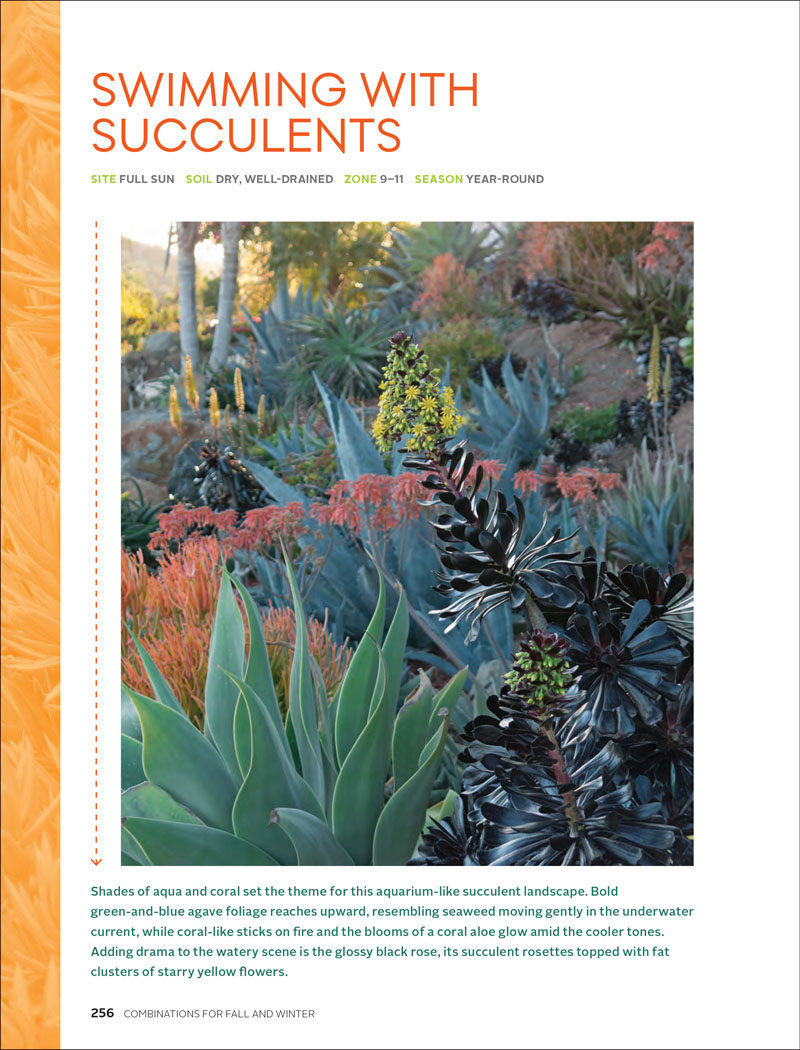
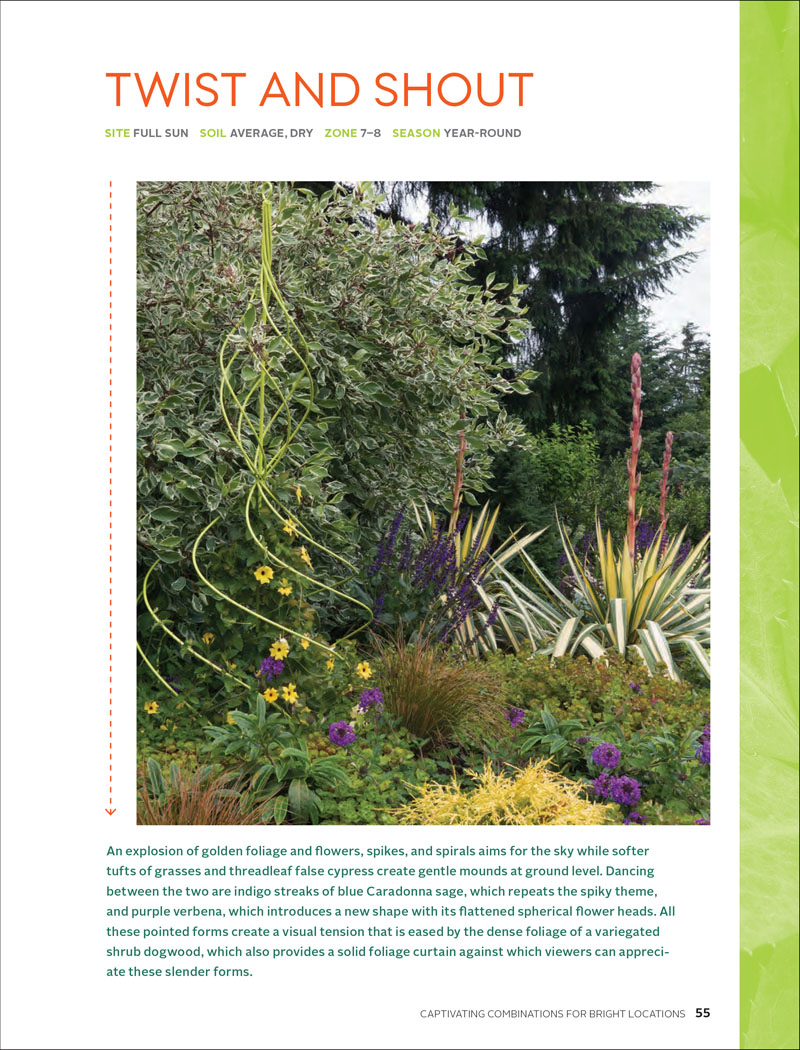
Watch now!
This week, Daphne picks wispy-foliaged ‘Soft Caress’ mahonia for its adaptability in shade and dappled light punctuated with bursts of heavy duty sun. Plus, find out why the amount of light affects how plants grow.

Garlic chives are an easy-to-grow perennial, beloved for almost evergreen, clumping texture in Zones 3-10 and edible late summer and fall flowers. Chop the flat leaves to top potatoes or salads and to flavor soups.

Trisha and Casie Luong put their garlicky zest into quick and easy Vietnamese Tofu and Garlic Chives Soup (Canh Dau Hu He).

Get the recipe and watch here!
On tour in Lorena, just south of Waco, Elizabeth and Geoff DeMaria turned blank pastureland into dreamy gardens to support wildlife and artistic outdoor creativity.
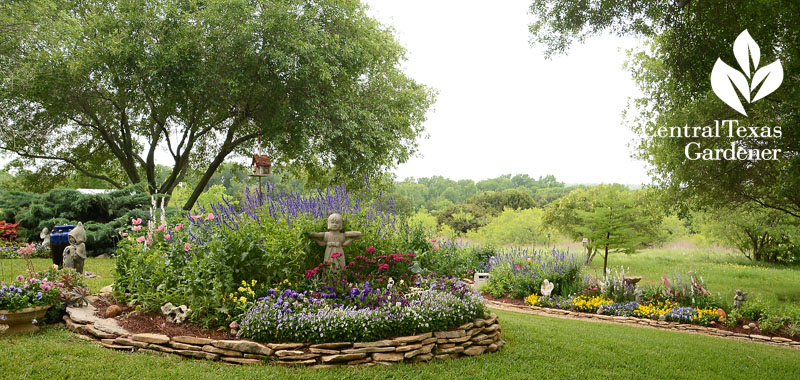
Elizabeth astounded me with her energetic hands-on hard work and joyful ideas. And she knows everything about plants!

Perhaps you’ve run into her, Geoff and son Blake at the family’s Tony DeMaria’s Bar-B-Que in Waco. Started by Geoff’s dad Tony in 1946, they were even featured in Texas Monthly!
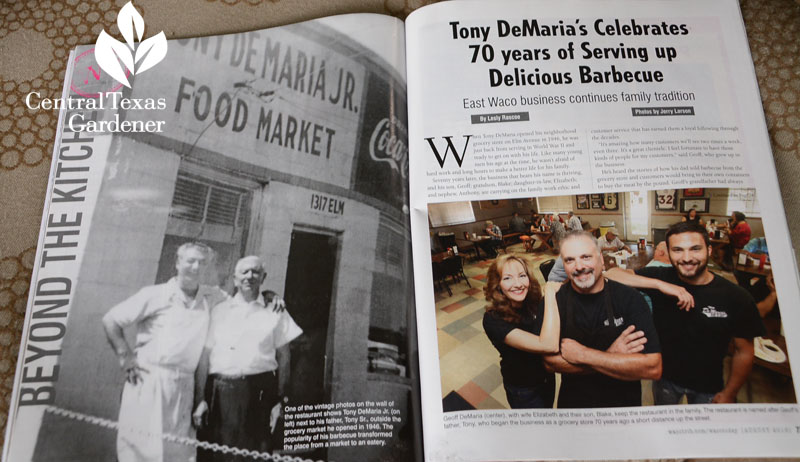
When she and Geoff married, they also fell in love with 5 acres of pastureland. In 1986, they built Elizabeth’s dream Victorian house. I wish I had been so on target in my 20s!
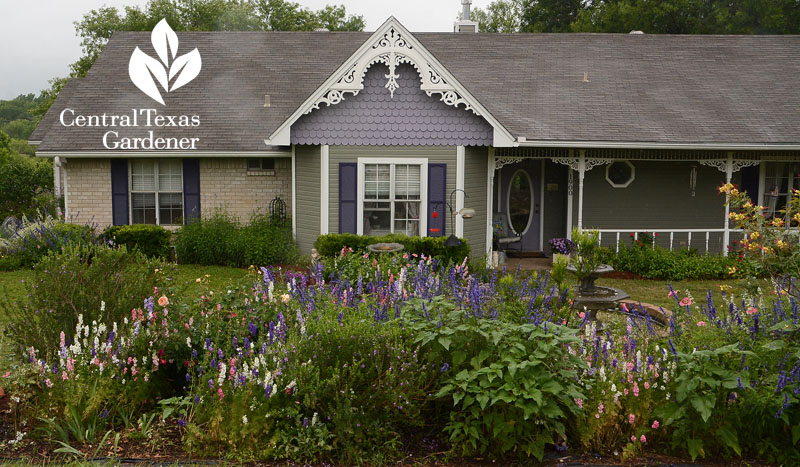
It took a few years, though, to turn pottery-hard clay soil and weeds into luscious gardens.
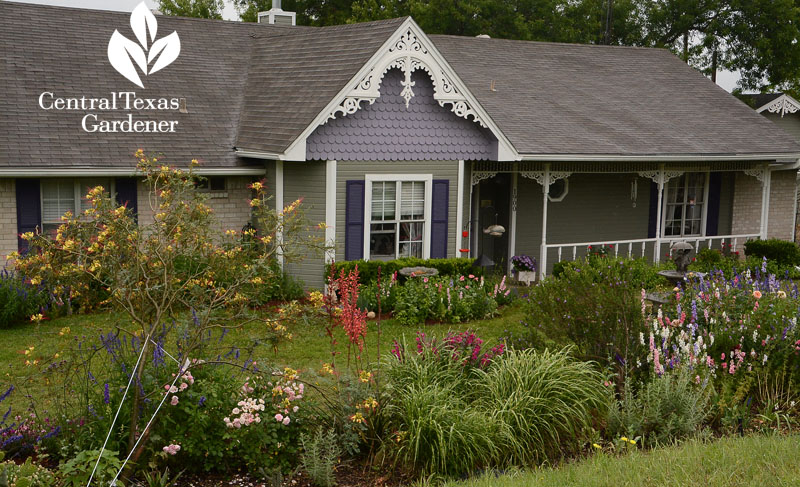
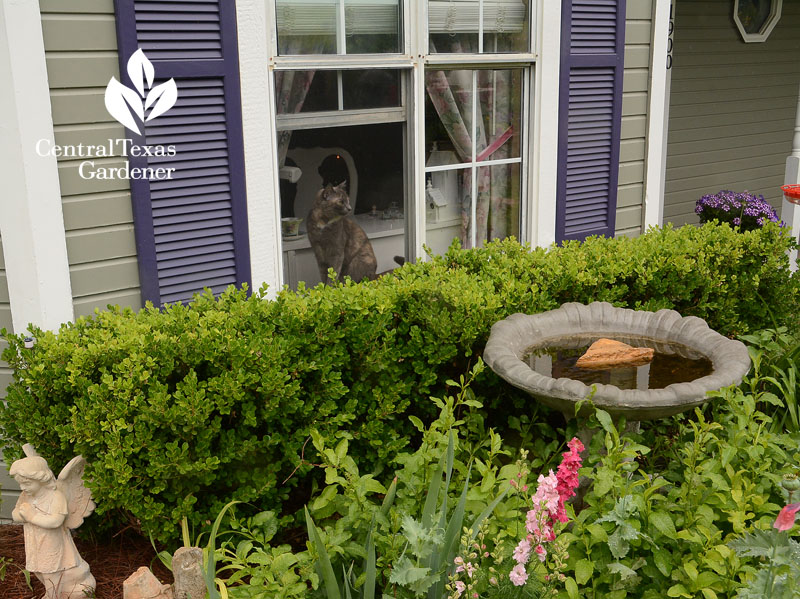
To fend off rushing water from the street, she designed curved raised beds that elevate the view and improve drainage, too.
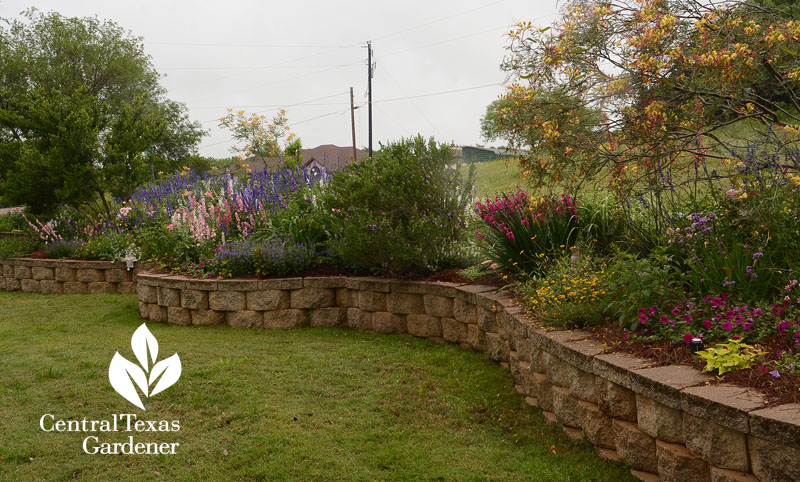
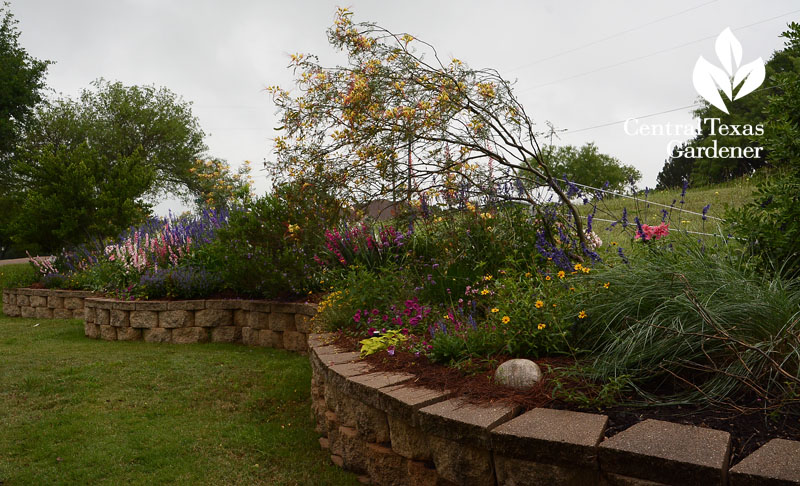
Foliage and flowers unite in layers of on-going annual and perennial color and texture, including perennial ‘Henry Duelberg’ salvia. Her brother Stephen Simcik contributes irises he propagated (out of view here).
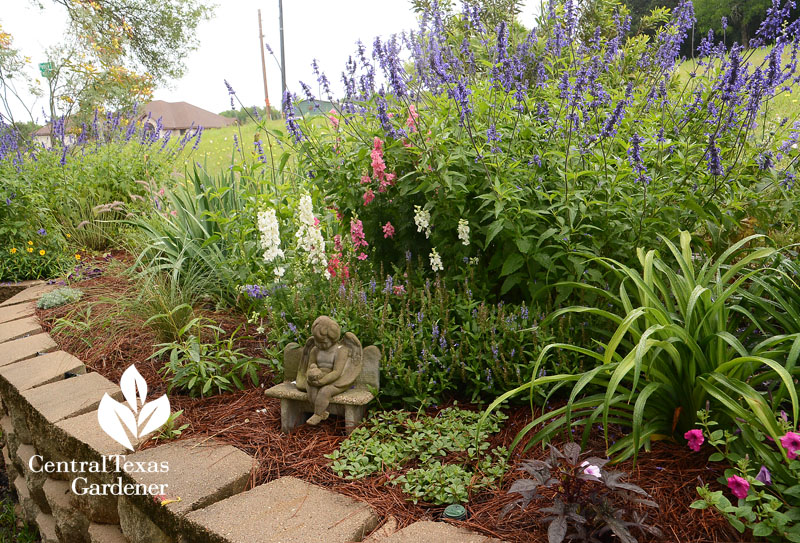
Bird of Paradise (Caesalpinia gilliesii) and red yucca (Hesperaloe) team up for hummingbirds.
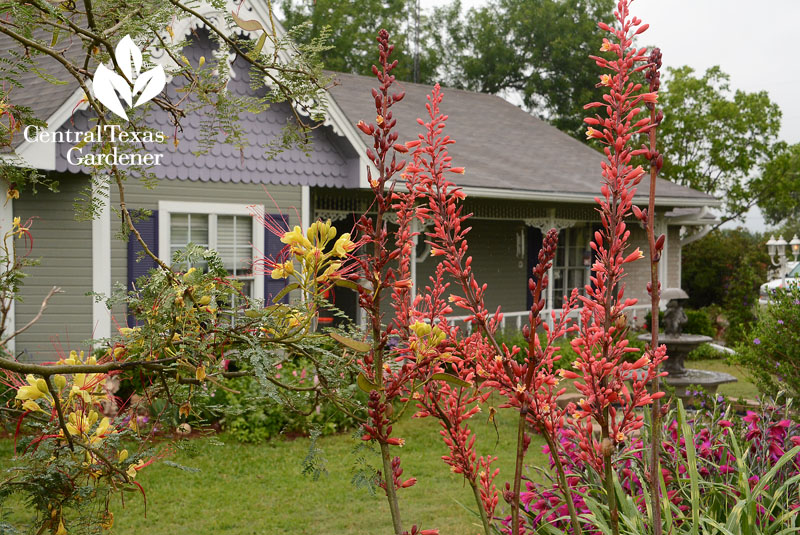
In back, she broke up the blank land with a patio-side island to greet and end each day with flowers, art, and fluttering wildlife.
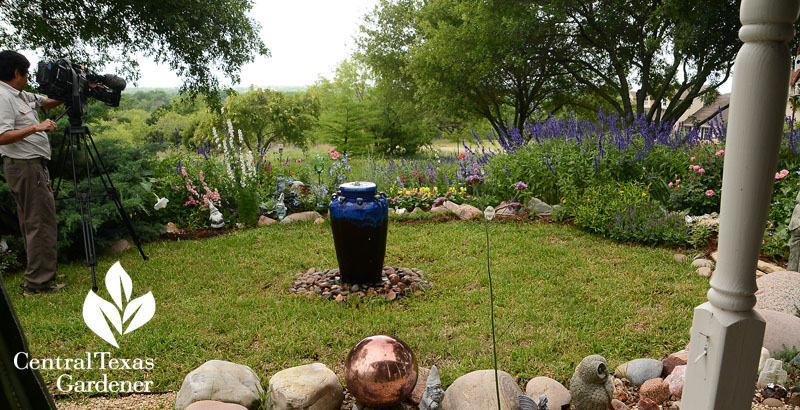
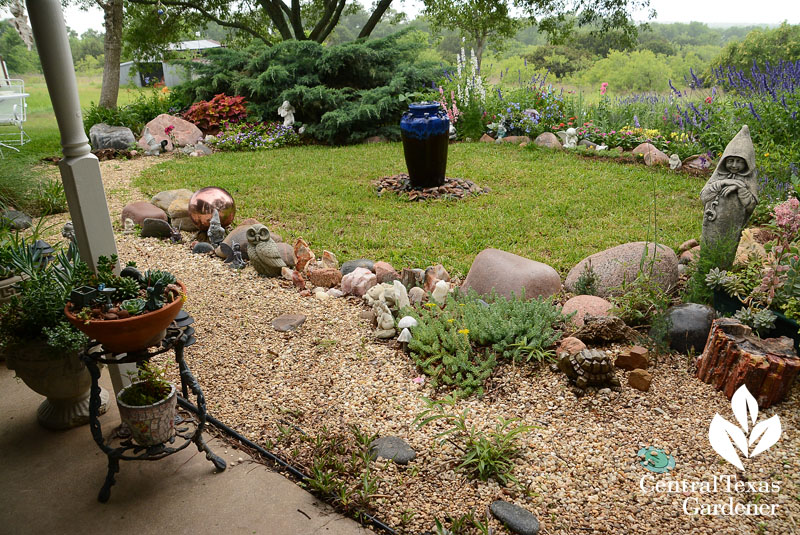
They built a natural stone retaining wall that elevates the view and improves drainage. In late spring, cool weather annuals like her favorite violas and pansies join warm weather plants that she started in her greenhouse.
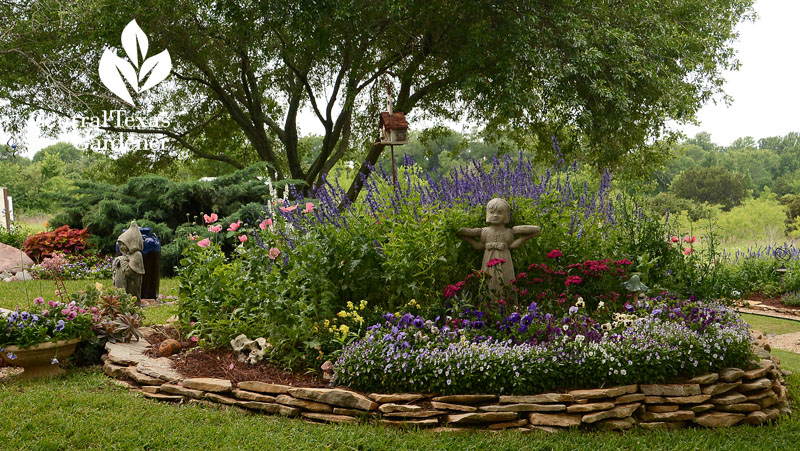
Elizabeth’s secret for success: every year she top dresses with 13 yards of turkey manure compost and mulches with pine straw and leaves.
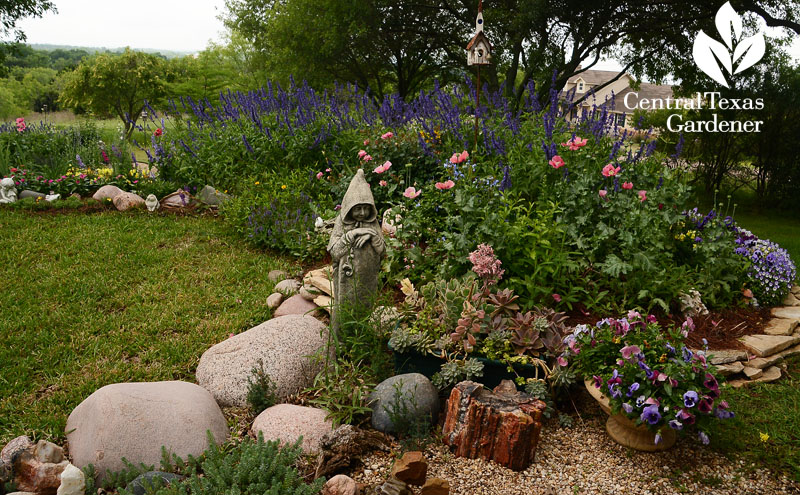
They water via their jet system. Elizabeth tells us, “Instead of a septic system we have what’s called a jet system. It takes everything from one holding tank, all the water from the house, and puts it through purification to water that retaining wall.”
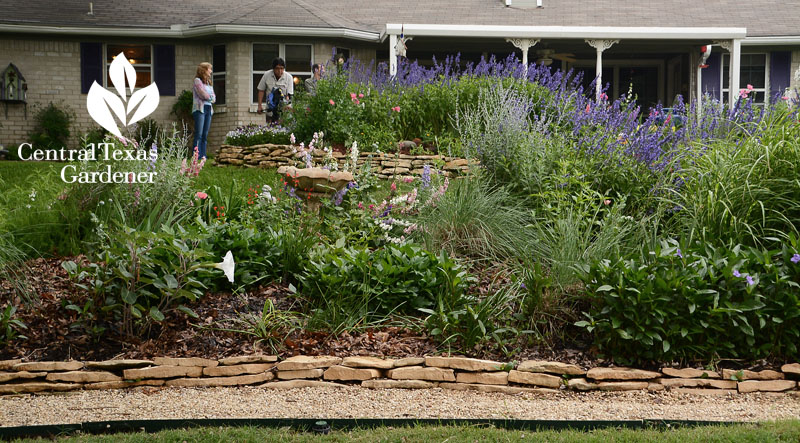
Drip irrigation takes care of her fairy garden containers.
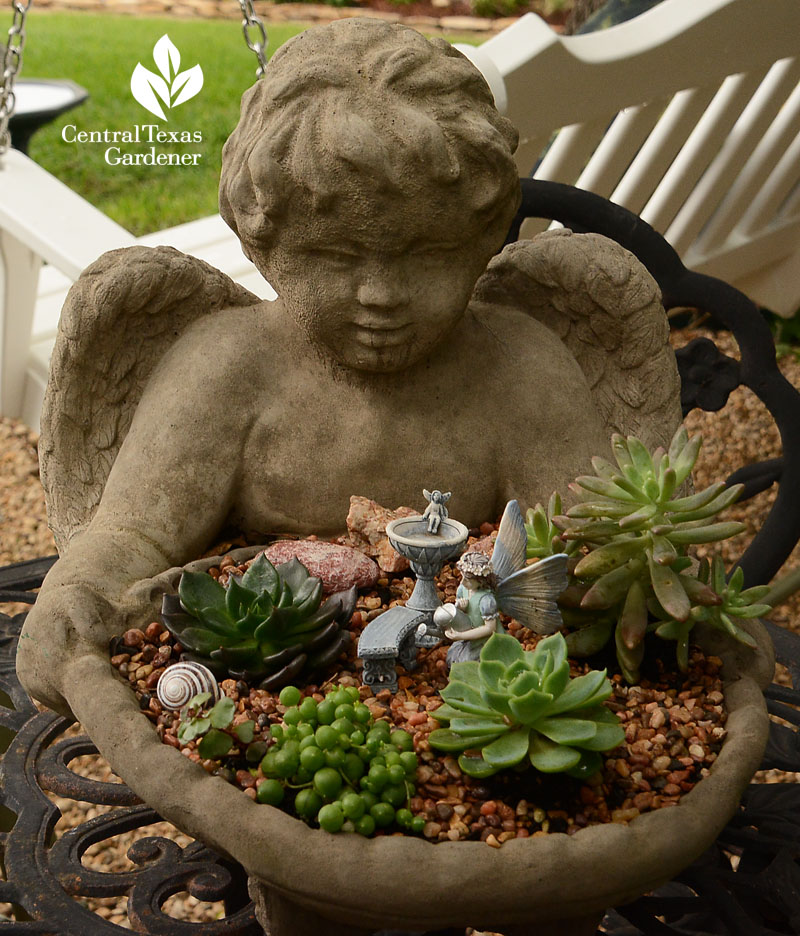
Down the hill, Elizabeth framed walk-around beds against the fields where wildflowers abound.
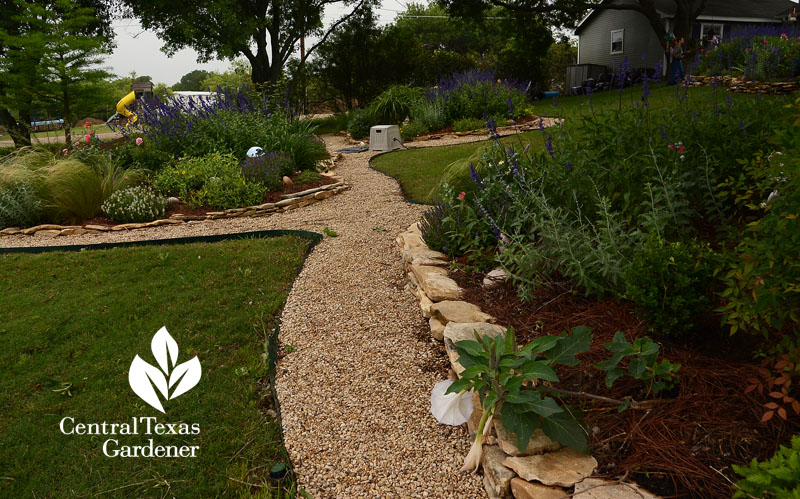
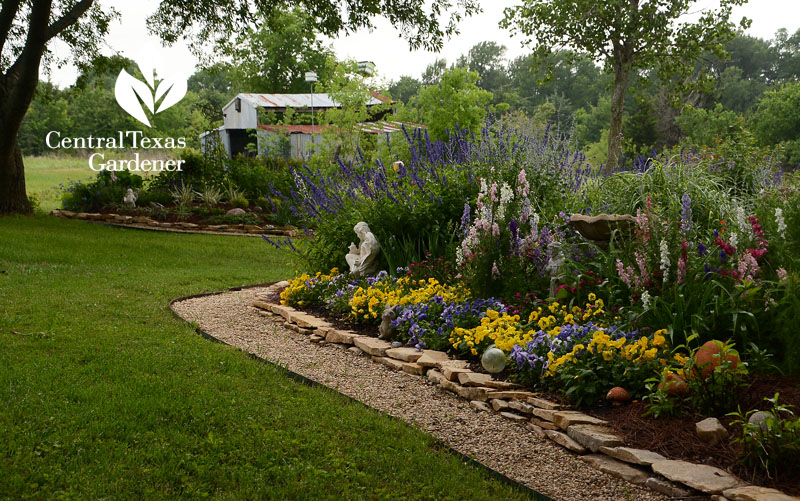
To create energy through diverse height and texture, she layers annuals, fragrant roses and native perennials and grasses.
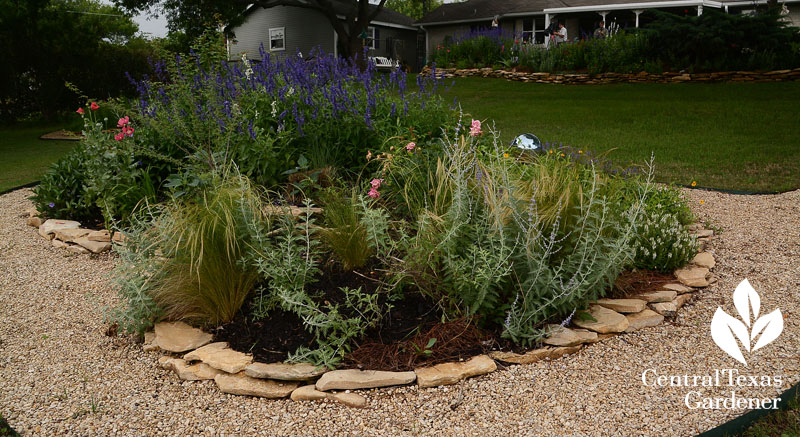
Companion plants for cool and warm seasons guarantee nectar and pollen all year round for resident and migrating wildlife. There’s always protective cover for ground-dwelling wildlife like lizards.
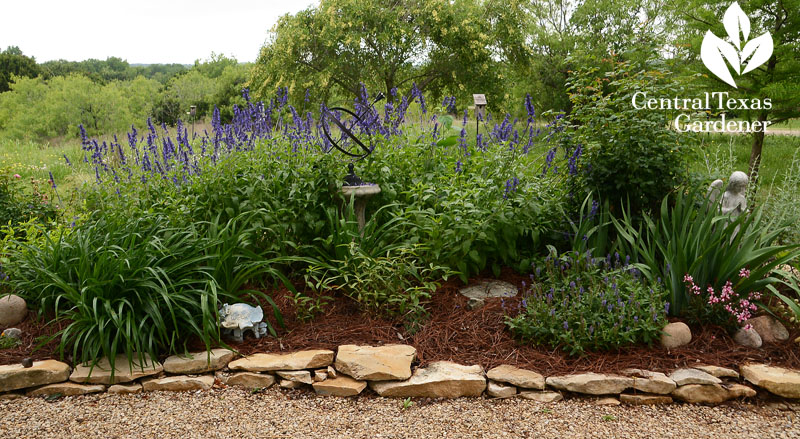
Although her diverse habitat naturally feeds wildlife, she supplements with feeders, included suet that convinced a woodpecker to stick around for a picture.
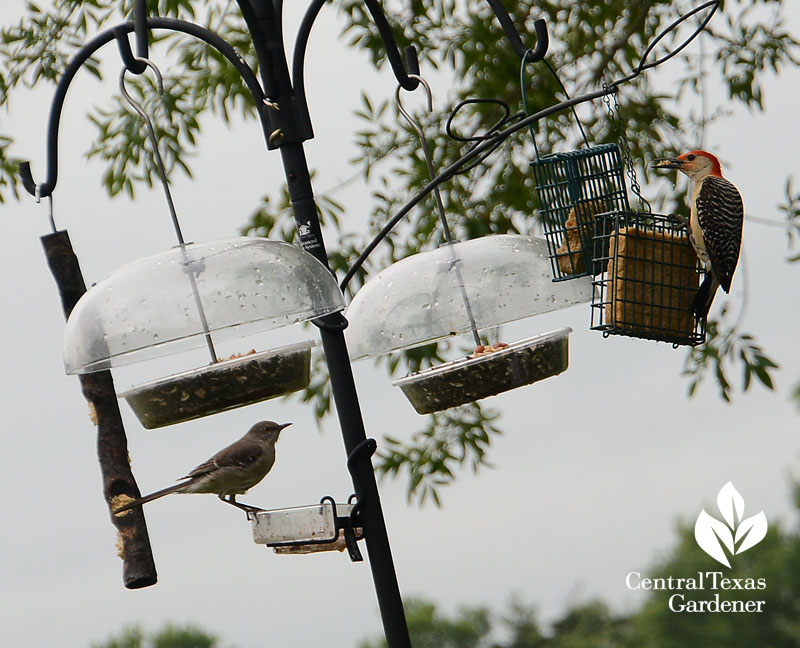
Her brother David Simcik, a Dallas-based assemblage artist of found objects, gifts her with unique handcrafted bird houses.
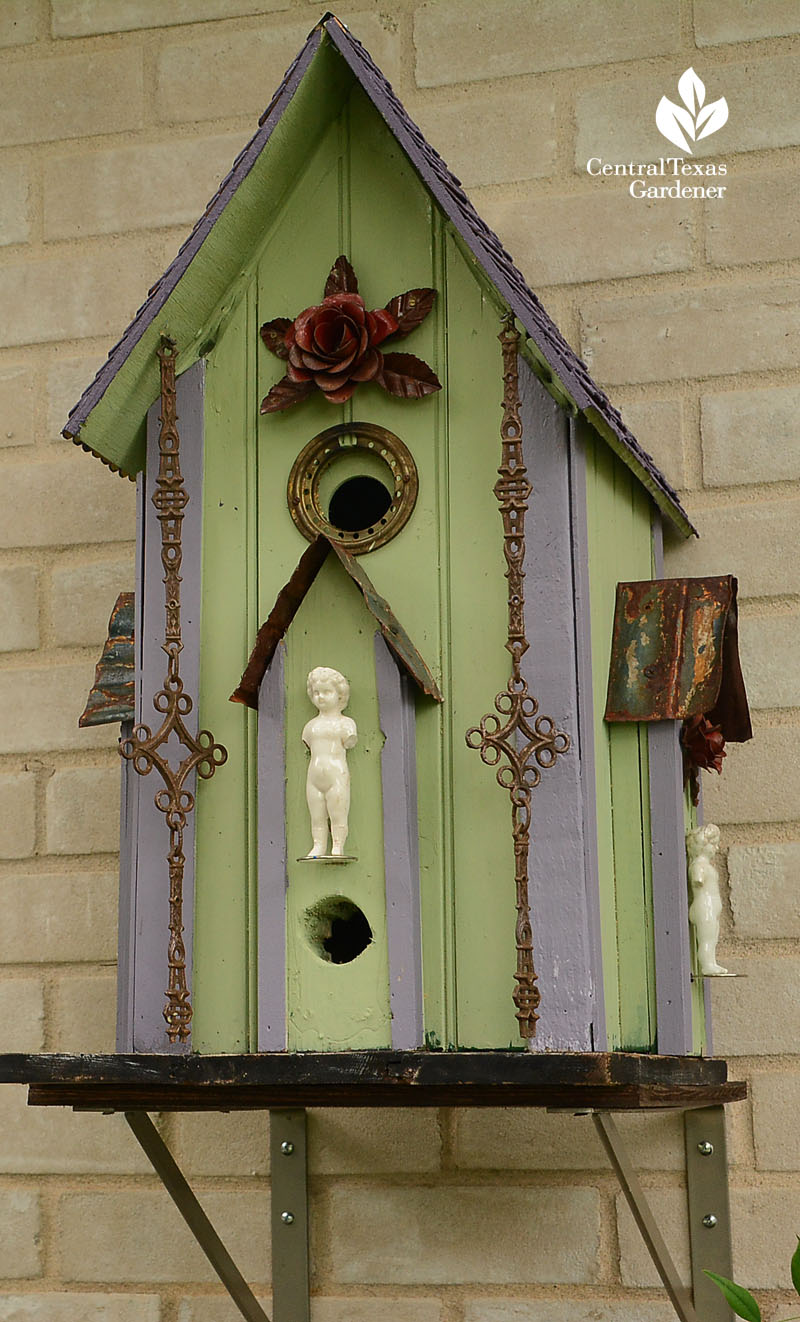
Watch Elizabeth’s inspiring story now!
Thanks for stopping by! See you next week for bee talk, Linda

